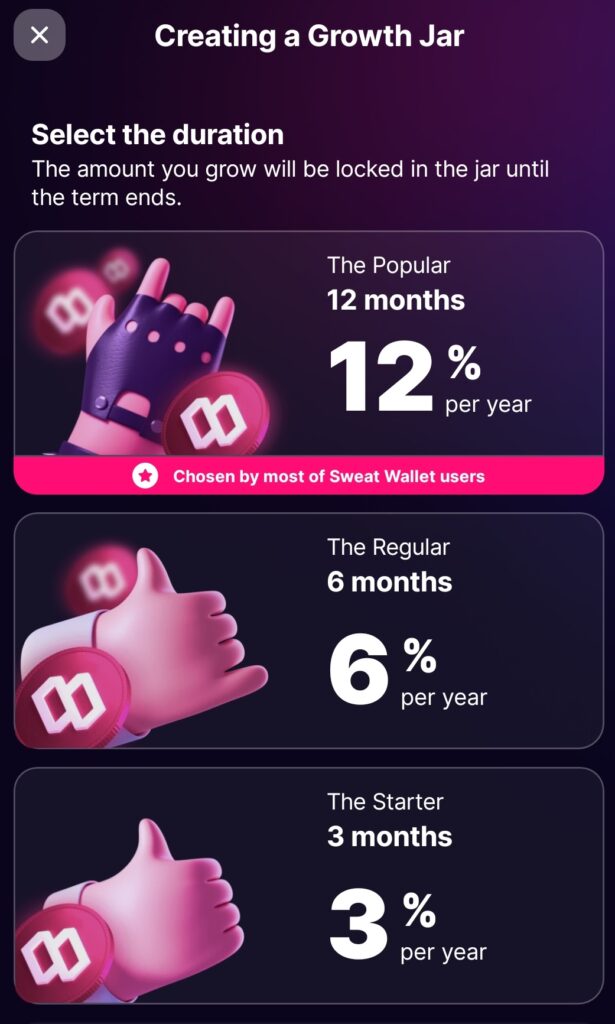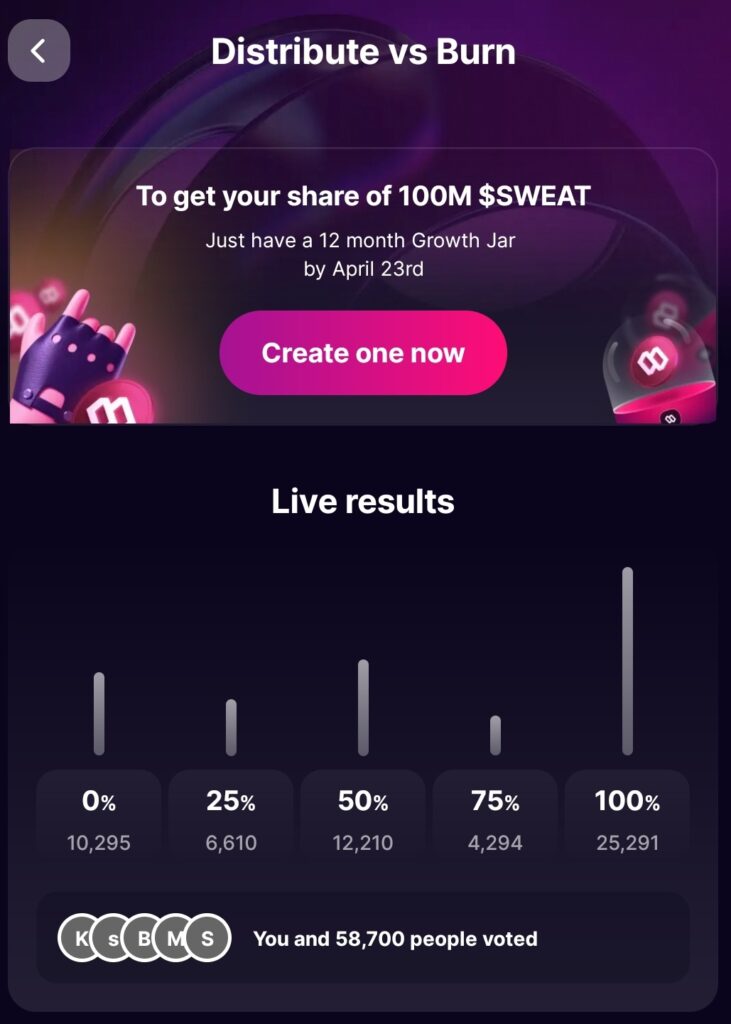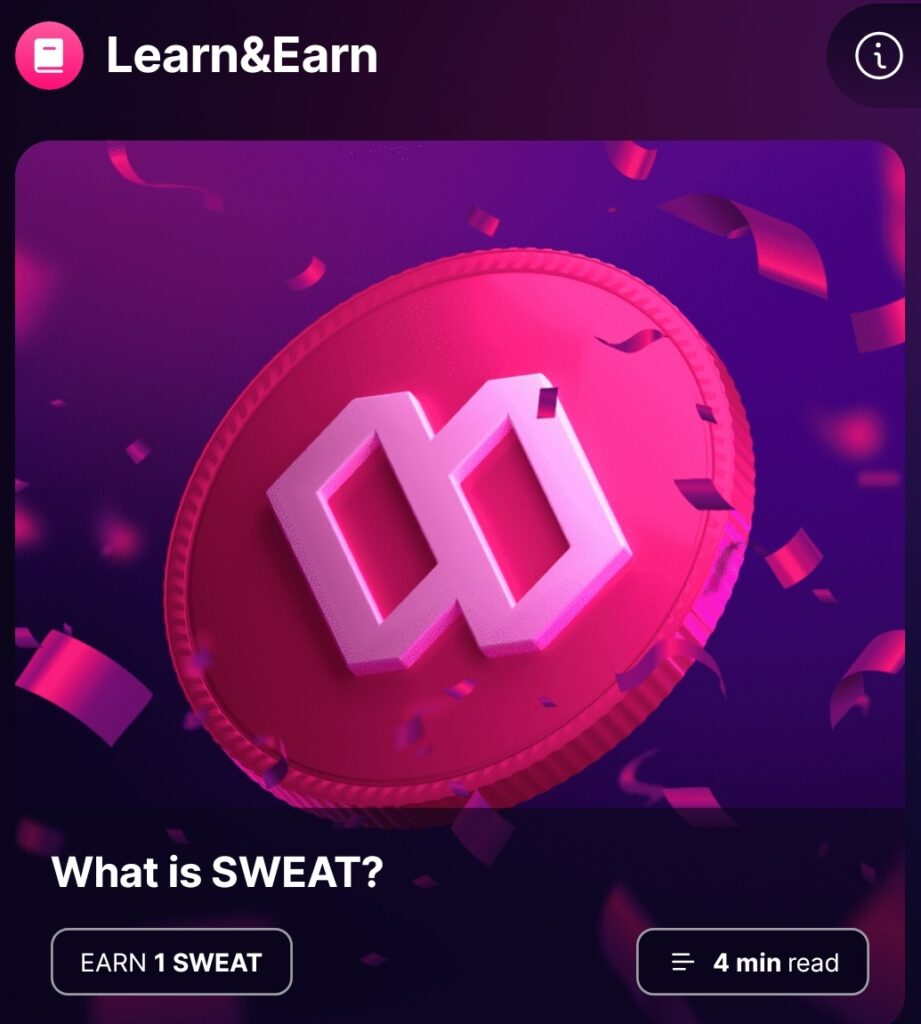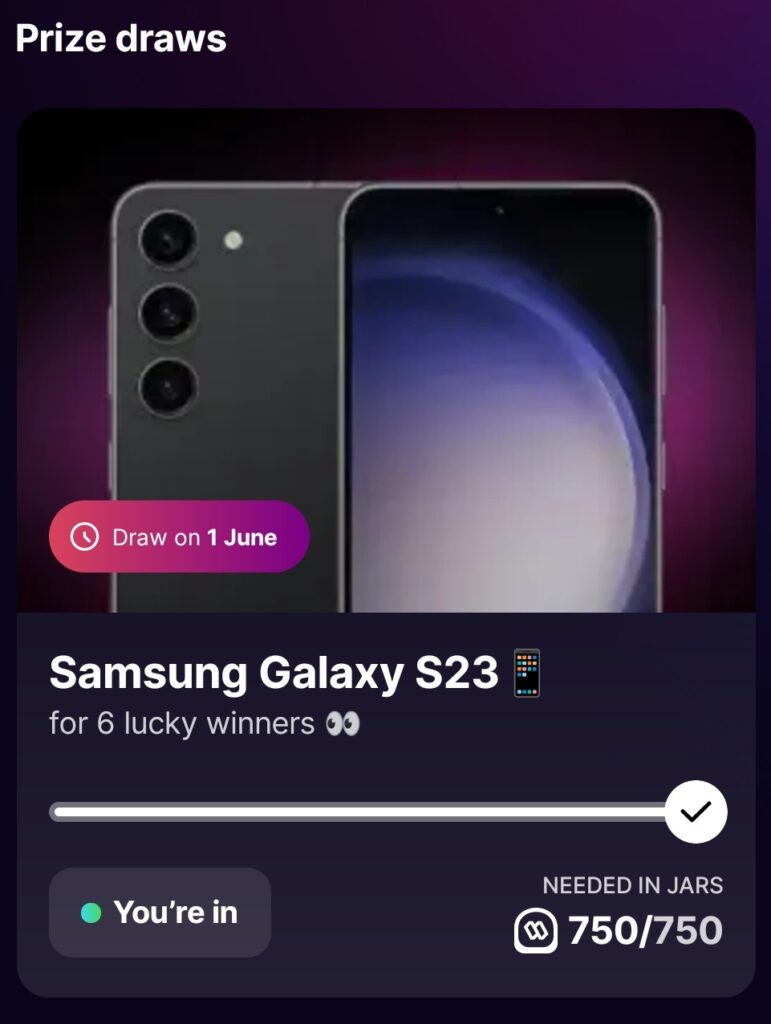
Sometimes, one gets struck by lightning by an idea he hears or sees somewhere. The Sweat Economy had this effect on me. Not for the promise of a 100x profits opportunity, but because of the simplicity of its mechanisms to bring to Web3 a practical use that I felt was lacking.

I love walking and running, and, like most practitioners of these activities, I like to track my performance, see the distances I endure and have some sense of my timings. I’ve used several apps so far, for different purposes, and most of them had “reward points” to gamify the experience. But, surprisingly, those reward points had little to no use apart from being a consolation prize for achieving some personal milestone. To this day, I still use Google Fit, with its “Heart Points” as a gamification experience through which I track my performance throughout the physical activities I practice. To no other end and no other use than my personal satisfaction. Which might be enough for most cases… But what if… there could be something more into it?
This is why the Sweat Economy seems so unique to me. Because, apart from the gamification and personal gratification of the reward points of other apps, it introduces a sense of scarcity in those “points”, and adds some use to them. Through the tokenization and use of blockchain technology. So simple, yet so surprising!
But What Is The Sweat Economy?
The Sweat Economy is a project in the crypto space that merges fitness with blockchain technology, aiming to inspire a healthier, wealthier planet by rewarding all forms of movement. Launched in 2015, Sweatcoin, the precursor to the Sweat Economy, was arguably the first example of a “Move-to-Earn” application, and it quickly became the most downloaded Health & Fitness app globally.
It is an on-chain token ecosystem and mobile application that rewards users for keeping physically active. It is a Web3 extension of the Sweatcoin platform, which was a Web2 application. In 2022, Sweatcoin partnered with the NEAR Foundation to launch SWEAT, a new token designed to unlock the power of movement, specifically the number of steps they walk daily.
The “Anything-to-Earn” Trend
The “Anything-to-Earn” is a burgeoning trend in the Web3 space that emerged in the 2021 bull cycle, where users are incentivized for various activities. This model came to prominence through the blockchain gaming industry with games such as Axie Infinity, with the “Play-to-Earn” concept, and has since then expanded to include fitness and sports-related activities through the “Move-to-Earn” model. Projects like Sweat Economy, StepN and others have adopted this model, rewarding users for performing some physical activity.
However, the “Anything-to-Earn” movement is not without its critics. Questions about the sustainability of these models persist, as they hinge on continuous user engagement and the maintenance of reward value (the infamous “Ponzinomics” of crypto projects). Additionally, concerns have been raised about potential exploitation, as users often need to share personal data or perform tasks for minimal rewards. Despite these challenges, the “Anything-to-Earn” movement still continues flourishing, signaling a shift in how users interact with and benefit from the digital world.
Tokenomics
The SWEAT token was launched on the NEAR blockchain on September 12th, 2022. The Sweat Economy successfully raised $13 million in funding, backed by several prominent blockchain investors, including Electric Capital, Spartan Capital, Jump, GSR, and the NEAR Foundation.
The original plan was to have 25.5 billion SWEAT tokens as maximum supply. This was changed later, to encompass a new vision of an uncapped token, meaning tokens can be minted indefinitely by walking. This inflation, however, is compensated by increased difficulty minting new tokens, and by deflationary mechanisms that translate into the burning of tokens. An example of this is “The Big Burn”, the SWEAT team committed to burn 4.5 billion tokens. The Sweat Foundation also committed to allocate a portion of its revenue to buy and burn SWEAT on the secondary market or to buy SWEAT and distribute it as staking yield. This is a relevant mechanism to improve the economy sustainability given that it provides further mechanisms to promote the token scarcity and “drain” the Sweat Economy.
The token distribution reveals this significant control of the team over the Sweat Economy. Although the team and advisors are directly entitled to 11% of the token supply, they also control the Foundation treasury (27.71%), the Ecosystem (7%) and the Sweat Co. (22%) allocations. 25% of the tokens are to be distributed through lockdrop, to the community. 10% of the tokens are released on the TGE, with the remainder 90% being unlocked linearly over 24 months (until September 2024).
The TGE was marketed as “the largest TGE in history”, given that users of the Sweatcoin app were able to opt-in to claim 1 $SWEAT for every Sweatcoin on their balance prior to the TGE, subject to locking period.
Users earn the token by walking and having their SWEAT Wallet app tracking their steps on their mobile phones. The difficulty to generate 1 $SWEAT is increasing, having started by 1,000 steps per token at TGE to more than 3,840 steps per token by the end of May 2023. The difficulty is set to continue increasing, thus contributing to increased scarcity of $SWEAT.
One significant limitation is that only the first 5,000 steps the user walks each day are accounted to mint $SWEAT, with the subsequent 5,000 steps being accounted to generate Sweatcoins. This is a significant limitation to incentivize the creation of power-users, adopted with the argument of maintaining a “healthy ecosystem in which both SWEAT and Sweatcoin can flourish”.

The Sweat Foundation has continued to deliver on the project. After what was entitled phase one of the token, the public launch, it has introduced staking for specific periods, from 3 to 12 months, with APYs varying from 3% to 12%). Staking, apart from fulfilling the role of reducing circulating supply, also enables users to earn additional token rewards and access frequent prize draws.
Technology Overview
The Sweat Economy operates on the NEAR blockchain, being consistently the most active token contract on that blockchain. To no surprise, given the impressive number of over 10.3 million token holders.
NEAR blockchain was chosen for its particular fit with the Sweat Economy requirements: a secure blockchain with a distributed consensus mechanism, with high transaction throughput and scalability (particularly due to its sharding capabilities) and, consequently, low transaction costs. This enables fast and cheap transactions, a requirement for a project that lives on delivering the microtransactions for the token earnings its users are entitled.
Sweatcoin vs SWEAT Token
The Sweat Economy has two mobile apps: Sweatcoin and Sweat Wallet. The Sweatcoin app is a centralized app for people who cannot access, or do not want to access, crypto. The Sweatcoin App converts your steps into sweatcoins, which you can exchange for goods and services in the Sweatcoin marketplace. Both apps reward users for the number of steps they walk daily, but the rewards come in different forms.


The Sweatcoin app rewards users in the form of Sweatcoin, exchangeable only inside the app with product offers. Theapp has its own marketplace, with offers of products and services at discount when paid partially with Sweatcoin. The offered products are mostly related to healthy lifestyle, travel, and consumer goods, with active offers varying from wireless earbuds, bracelets, cosmetics, or discounts on professional therapists and gift cards. he Sweatcoin app also includes a “Sweatcoin for Good” section where users can donate their Sweatcoin for charitable causes.
The Sweat Wallet app has embedded a mobile digital wallet on the NEAR blockchain, where the SWEAT tokens, and other tokens, are stored. The app is characterized by a user-friendly interface, facilitating the onboarding of a larger audience into Web3 and crypto, as proven by its user numbers. The rewards on the app are typically of consumer electronics, from Apple products to e-gaming gear and sports-related perks, such as signed shirts from top football players. Often, the rewards also include crypto-related perks, such as rewards in other cryptocurrencies (ethereum, bitcoin or stablecoins) or NFTs. However, the Sweat Wallet app lacks marketplace functionality as the token does not serve as a means of exchange for goods and services as in the Sweatcoin app.

The Sweat Economy uses a unique step verification algorithm to verify that the steps were actually taken by the users. The Sweatcoin Step Verification Algorithm validates steps to filter out the shakes and bumps registered by your phone — which are not real steps — while also recognizing cheating. The algorithm analyses steps collected directly by your phone and checks them against other data points like location, speed, consistency of movement, direction, acceleration etc. to ensure they’re real.
If a user opts-in to SWEAT, an aggregated view of their steps data will appear on the blockchain. The public key (unique, anonymous crypto reference) of the receiver of SWEAT will be visible on the blockchain.
Security
The Sweat Economy operates on NEAR, which means it inherits the security features of the NEAR blockchain, from its Proof-of-Stake consensus mechanism. Apart from that, both the Sweatcoin and Sweat Wallet apps have their own security apparatus in place. Sweat Wallet is built around a NEAR wallet, to secure the tokens and transactions. Despite its easy-to-use functionality, no significant security threats have been found. It also has frequent app updates, which also signal that the Sweat Foundation is keen on keeping up with the overall security of their system.
The Sweat Economy uses a unique step verification algorithm to ensure that the steps recorded by users are genuine. The Sweatcoin Step Verification Algorithm, above mentioned, analyzes steps collected directly by your phone and checks them against other data points like location, speed, consistency of movement, direction, acceleration etc. to ensure they’re real. This verification algorithm filters out the shakes and bumps registered by your phone — which are not real steps — and recognizes cheating (yes, some people tried to put their phone on top of a washing machine, their dog or even a pet rabbit!). The Algorithm analyzes your movement data and takes out the invalid steps. The Sweat Economy also provides some information detailing their security practices, and their apps have been validated both by Google Play Store and by Apple Store.
Governance

The Sweat Foundation has declared their intention to have a decentralized governance structure, which is still in its planning stages. The governance structure is outlined in the SWEAT litepaper, but it is not yet fully implemented. There have been some experiments to this decentralized governance, as exemplified by the voting poll for the community of staking token holders, to decide on the destination of 100M $SWEAT.
The Litepaper also includes statements towards the plan to introduce a DAO as part of its roadmap, envisioned to be a major part of how the project evolves and how decisions will be made, to further engage the community. The Sweat DAO is also expected to unleash new revenue opportunities for the Sweat Economy, by allowing for the monetization of the users’ private data.
This type of approach is not a novelty in the space, as many Web3 projects that have emerged in recent years start as more centralized in the decision power, and progressively evolve towards more decentralization and community participation in governance. However, this signals that, at least for the time being, the project is mostly reliant on the Sweat Foundation team for its deployment and evolution.
Roadmap
The Sweat Economy has achieved significant milestones in the second half of 2022, from the launch of the Sweat Wallet, to fiat on-ramps directly on the app, introducing staking and rewards, as well as the first governance vote and the adoption of the buyback and burn policies.
For 2023 the roadmap was equally ambitious, from the introduction of Sweat Hero and Legs NFTs, to further integration with other cryptocurrencies, direct swaps, Learn and Earn features and a new generation of growth jars (the staking mechanism) and rewards. As of May 2023, the integration with other cryptocurrencies on the NEAR ecosystem has been implemented, as well as the Learn and Earn module (allowing for partnerships with other crypto projects, such as Tether).

The Sweat Hero and Legs NFTs are supposed to be a significant evolution, introducing a new gamification mechanism embedded in the Sweat Economy, with direct confrontations among users. However, this feature is yet to be completed.

What is being implemented is more draining mechanisms in the Sweat Economy. The staking requirements for entering the prize draws have been increasing (despite leaving some lower-level prize draws to allow everyone to participate), as well as the introduction of a “fee” of 1 $SWEAT to enter prize draws.
Other policies on the roadmap that are deemed to further promote a dynamic economy are other draining mechanisms such as inactivity fees for inactive users.
